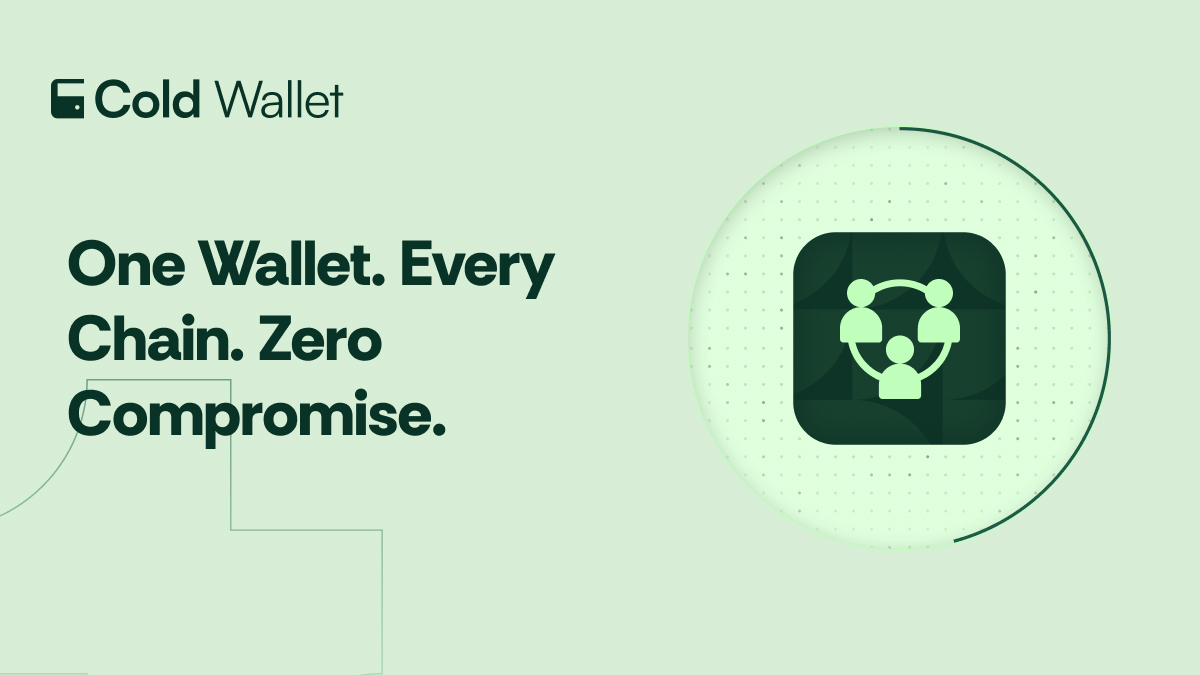Cold Wallet vs MetaMask: The Privacy-First Crypto Wallet Redefining Control
Cold Wallet’s $CWT Set for 4,900% ROI While Polkadot and Sui Fuel Altcoin Season Comeback
In a world where convenience often comes at the cost of privacy, the tools we trust most are sometimes the ones compromising us. While wallets like MetaMask have prioritized user interface and rapid adoption, they’ve done so by quietly integrating trackers and analytics that chip away at user anonymity.
Cold Wallet, on the other hand, offers a counter-approach, a privacy-first design that doesn’t watch, log, or expose its users. Built with a zero-knowledge foundation, it shifts the focus back to user control and discretion. For those tracking the evolution of digital asset management, Cold Wallet stands as a clear contrast in the privacy vs. usability debate.
Polkadot(DOT) BreakoutPolkadot (DOT) is capturing attention with its recent formation of a bullish double falling wedge pattern, a technical indicator often associated with potential upward price movements. Following this, after rebounding from a key support level at $3.72, DOT is showing signs of renewed momentum, with analysts eyeing a potential breakout toward the $10 mark. Moreover, this optimism is further fueled by a significant $100 million investment into the Polkadot ecosystem and the network’s transition toward a zero-inflation model, both of which are bolstering investor confidence.
In parallel, the adoption of Decentralized Physical Infrastructure Networks (DePIN) within Polkadot’s framework is enhancing its utility, attracting increased attention from both developers and users. As a result, the market’s positive sentiment is reflected in the rising open interest and a $400 million increase in DOT’s market capitalization, indicating growing trader engagement. Looking ahead, if DOT successfully breaks above the upper trendline of the wedge pattern, historical performance suggests a significant price surge, potentially reaching the $10 target.
Sui (SUI) Market WatchSui (SUI) is currently consolidating around the $2.10 mark, following a notable decline from its recent high of $2.60. Specifically, this downturn was prompted by consecutive Break of Structure (BOS) and Change of Character (CHoCH) patterns, leading to a test of the $2.00 support level. At this point, the $2.00 zone is now being closely monitored as a potential support structure, with price action hovering above this level as buyers attempt to absorb selling pressure.
Meanwhile, in a significant development, Sui has surpassed Arbitrum in decentralized exchange (DEX) volume, recording $432.9 million compared to Arbitrum’s $203.9 million. Furthermore, this surge in activity is accompanied by a $60 million inflow of stablecoins within 24 hours, elevating Sui’s total stablecoin holdings to over $800 million.

Consequently, the market is now watching for a potential bullish reversal, which would be validated if SUI closes above the BOS level just below $2.40. If that occurs, such a move could prompt another test of the $2.60 supply zone. On the other hand, a close below $2.00 would confirm a continuation of the downtrend, potentially targeting the $1.80 accumulation zone.
Cold Wallet Is the Counter-Narrative Web3 NeedsWhile mainstream wallets have chased sleek interfaces and deep analytics integrations, they’ve quietly turned users into data points. Every click, transaction, and connected dApp becomes another breadcrumb in a trail of on-chain behavior logged, linked, and often sold. Privacy, once a core value of crypto, has become an afterthought. In contrast, that’s where Cold Wallet draws a hard line.
Cold Wallet isn’t just another product, it’s a quiet revolt. Engineered differently, it’s built on a zero-knowledge architecture and designed with a cold-storage mentality, rejecting the surveillance-first approach of popular wallets. There’s no tracking, no hidden analytics, and no background data harvesting. Instead, users don’t just hold their keys, they reclaim control over their digital footprint.
At the same time, at the heart of this movement is $CWT, the token fueling Cold Wallet’s privacy-first infrastructure. Now in presale stage 1 at just $0.007, $CWT gives early supporters access to Cold Wallet’s secure features and governance. Looking ahead, when it launches at approximately $0.3571, that’s a potential 4,900%+ upside, but this isn’t just about profit. It’s about supporting the only wallet that treats users like people, not products.
Ultimately, Cold Wallet is the antithesis of MetaMask. No leaks. No exposure. No compromise. For investors tired of trading privacy for convenience, $CWT isn’t just a token, it’s a vote for a different kind of Web3. The kind where privacy is built-in, not patched on. The kind where surveillance isn’t the price of participation. This is the counter-narrative. And it’s gaining traction.
A Choice Between Exposure and ControlIn the debate over privacy and participation, the difference lies in what you’re willing to trade. MetaMask and similar wallets have normalized convenience with a cost: your data, your habits, your on-chain identity. Cold Wallet flips that model. It doesn’t just store assets; it protects what others overlook: your digital footprint. With surveillance creeping deeper into Web3, tools like Cold Wallet don’t just offer a feature set, they offer a position.
For users and investors alike, the question isn’t which wallet has more integrations. It’s which one you can trust when everything else starts watching.
Explore Cold Wallet Now:
- Presale: https://purchase.coldwallet.com/
- Website: https://coldwallet.com/
- X: https://x.com/ColdWalletToken
- Telegram: https://t.me/ColdWalletTokenOfficial
Disclosure: This is a sponsored press release. Please do your research before buying any cryptocurrency or investing in any projects. Read the full disclosure here.
The post Cold Wallet vs MetaMask: The Privacy-First Crypto Wallet Redefining Control appeared first on The Merkle News.



